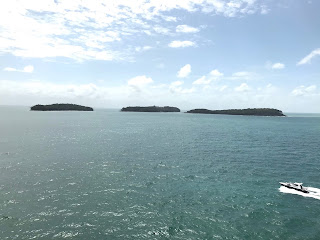Devil’s Island, French Guiana
The name Devil’s Island, located 16km east of French Guiana, South America, has been popularized in print and film, while referencing the name of Papillon. Papillon was the nickname, based on his chest tattoo of a butterfly, of Heri Charrière, a petty criminal who had been wrongly accused of murder and was transported to Devil’s Island to serve his sentence.
The film versions of life in the ‘Devil’s Island’ penal system clearly depicts the harsh environment in which everyone lived; prisoners and guards.
Devil’s Island, named as such by the prisoners because, to them, it perfectly reflected the situation they had found themselves in. It was a place of despair, sickness and death.
The islands were infested with mosquitos and tropical diseases, accommodation conditions were insanitary, punishments were harsh, prisoner on prisoner violence was very common and the survival rate was very low. For the period between 1852, when the prisons opened, and 1953, when they ceased to be used, the death rate reached a high of 75%. 70,000 prisoners were transported to Devil’s Island during the 100 years of use as a penal colony.
The bodies of the dead were not buried, they were thrown into the ocean which attracted sharks and habituated them to eating human remains. The presence of the sharks, the strong currents between and around the islands, the 16 km distance from the mainland shore, strongly discouraged the prisoners from escape attempts.
Royal Island is the only one of the three islands where tourists are allowed to go ashore but, unfortunately for us, our visit was a view from afar and just a ‘scenic’ sail around.
The film versions of life in the ‘Devil’s Island’ penal system clearly depicts the harsh environment in which everyone lived; prisoners and guards.
Devil’s Island, named as such by the prisoners because, to them, it perfectly reflected the situation they had found themselves in. It was a place of despair, sickness and death.
The islands were infested with mosquitos and tropical diseases, accommodation conditions were insanitary, punishments were harsh, prisoner on prisoner violence was very common and the survival rate was very low. For the period between 1852, when the prisons opened, and 1953, when they ceased to be used, the death rate reached a high of 75%. 70,000 prisoners were transported to Devil’s Island during the 100 years of use as a penal colony.
The bodies of the dead were not buried, they were thrown into the ocean which attracted sharks and habituated them to eating human remains. The presence of the sharks, the strong currents between and around the islands, the 16 km distance from the mainland shore, strongly discouraged the prisoners from escape attempts.
Royal Island is the only one of the three islands where tourists are allowed to go ashore but, unfortunately for us, our visit was a view from afar and just a ‘scenic’ sail around.
The three islands which collectively were called, by France, the Cayenne penal colony,
but soon became more commonly known as ‘Devil’s Island’.
To the right is St Joseph Island - the ‘reclusion’ where prisoners were sent for solitary confinement.
In the center is Royal Island - reception area for all prisoners and where the main jail was located.
Royal Island - if the picture is expanded, some of the historic buildings and
infrastructure can be seen.





Comments
Post a Comment